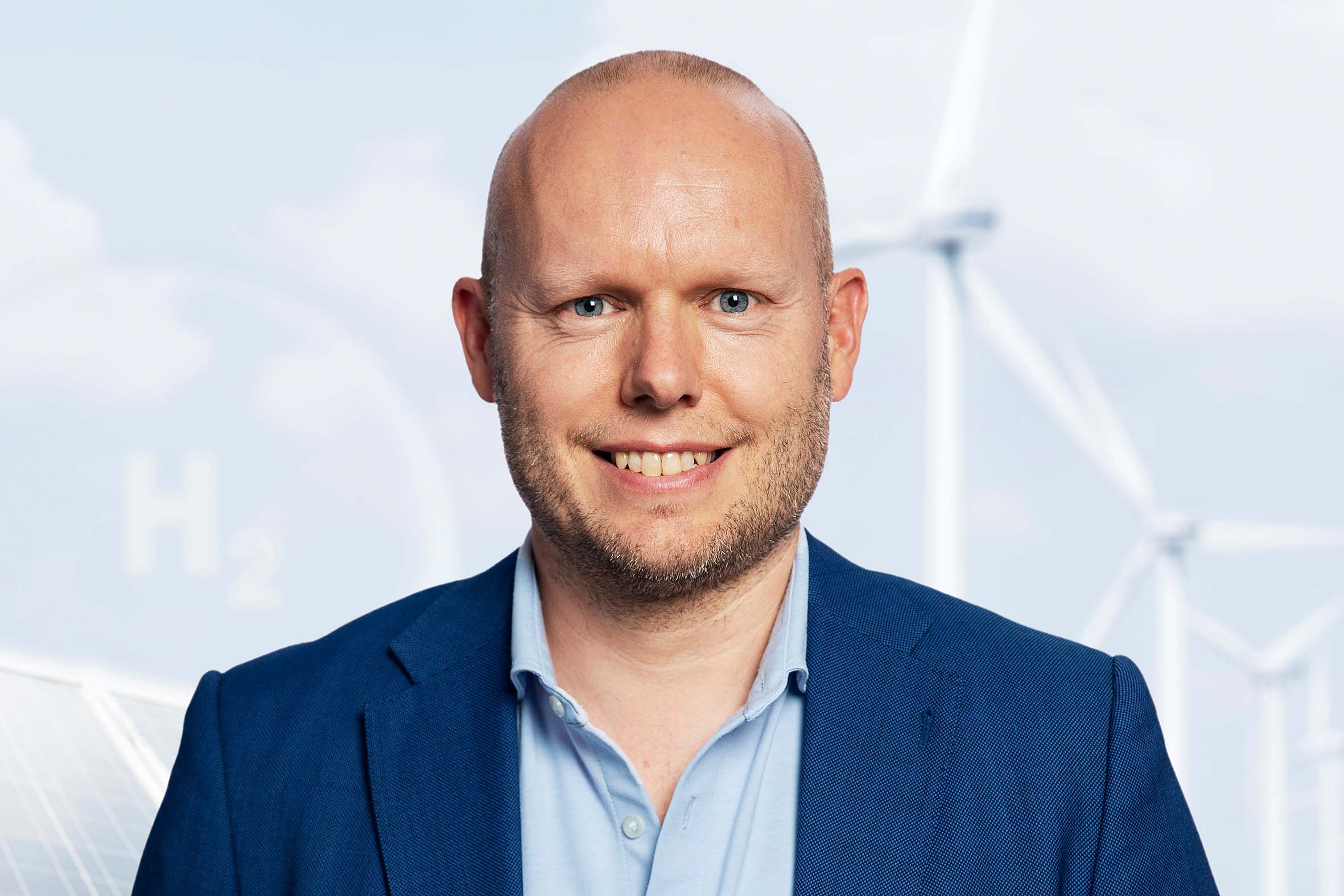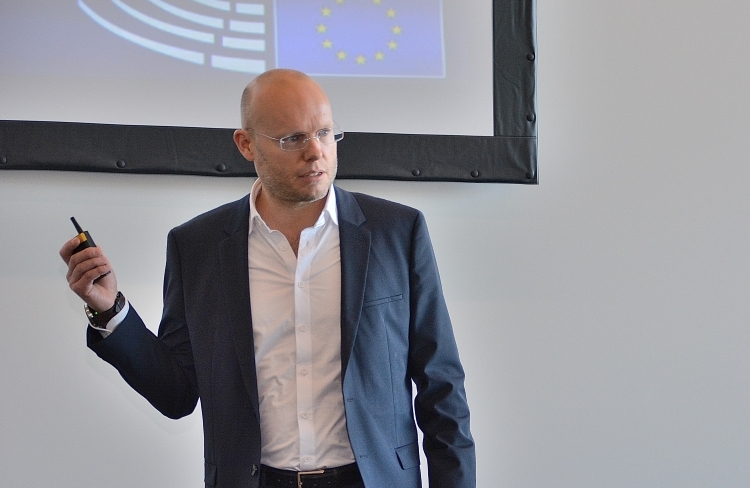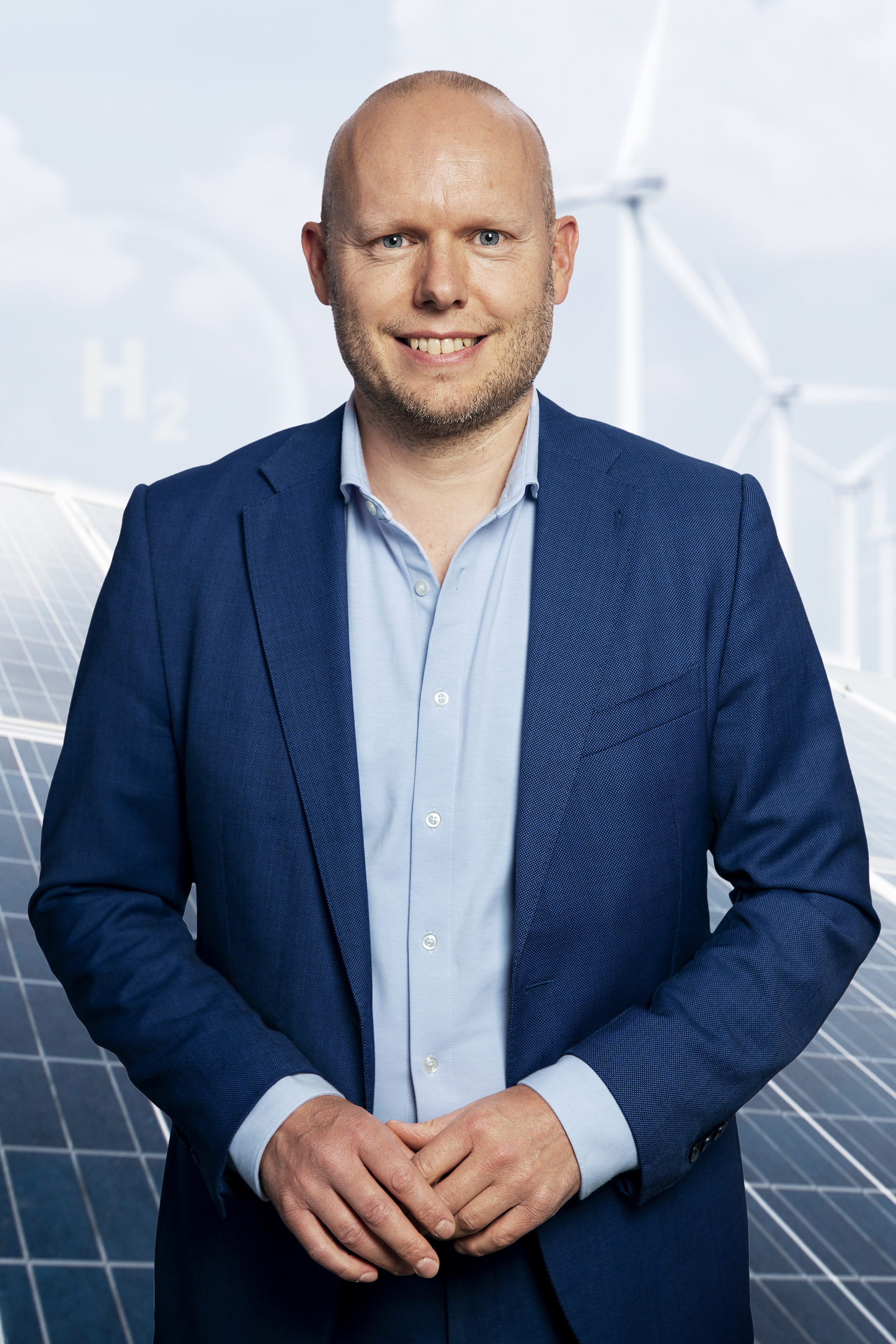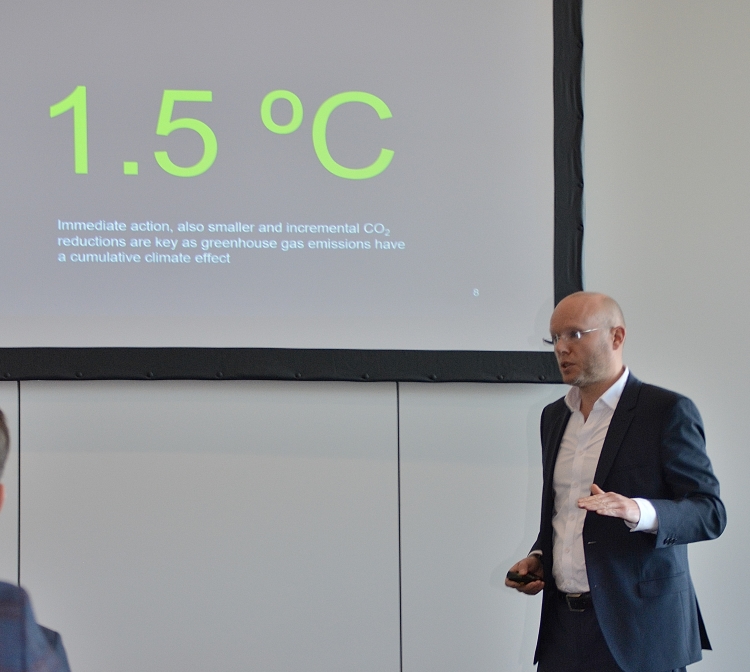The production of green steel is also a political question
by Dagmar Dieterle

Interview Sander Heinhuis, Director Marketing, Tata Steel Nederland
 The production of green steel is also a political question. Which role does the political framework play when it comes to green steel production in Europe?
The production of green steel is also a political question. Which role does the political framework play when it comes to green steel production in Europe?
Base materials such as steel are strategic to the economy, as they form the basis for economic value chains. This is why we have to ask ourselves: How can we keep foundation industries in Europe?
As steel is subject to global competition, there needs to be a level playing field. It will be a real challenge for Europe to be the leading continent in decarbonisation, if we are in competition with areas that are not confronted with climate policy related costs, or that do not play a leading role in decarbonisation.
So there needs to be a political framework, and we are pleased to see what happens at the moment. Of course, we have our national discussions in the Netherlands, but even more importantly Tata Steel is a member of the European Steel Association Eurofer, where we are engaging to align with the governmental bodies in Europe. It needs to be clear that there should to be a level playing field not only when it comes to import but also to exporting steels. If the exports were hampered then the supply and demand balance in Europe may still be distorted.
 We need to have a fair opportunity to compete globally, but we also have to make sure that there is no carbon leakage – this meaning the relocation of European production to non-European production in the value chain. Not for steel production, but also not for the production of steel intensive goods.
We need to have a fair opportunity to compete globally, but we also have to make sure that there is no carbon leakage – this meaning the relocation of European production to non-European production in the value chain. Not for steel production, but also not for the production of steel intensive goods.
Why do you take so much effort to produce green steel in Europe? After all, there would be probably cheaper options for steel producing outside Europe.
Well, of course, you could produce steel outside Europe, but you have to recognise: The steel industry accounts for about seven percent of global greenhouse emissions. If you shifted production elsewhere, where there is no intention to be climate-neutral by 2050, how will this impact the pace of the steel industry’s sustainable transition?
If you look at the import and export balance of steel for the EU, you already see that in the past 20 years the import of steel products from outside has been increasing. If you then take a look at the countries you see: It is Turkey, China, Russia and Ukraine that Europe has been importing from during the last decades.
And you have to ask yourselves: Is it helpful for Europe to have its base industries dependent on countries, which are outside your direct influence, when strategically looking at the global competition and geopolitical interdependencies?
So outsourcing base industries, such as steel, is neither ideal from a climate perspective nor in terms of strategic independence of industries in Europe.
At Tata Steel Nederland, you have created the brand “Zeremis” to display your journey to carbon-neutrality by 2045. What is behind this brand?
Transition requires technological advance, but it is also about the development of value chains. So there needs to be a significant degree of alignment and collaboration between different stakeholders. And this is not one or two steps but an entire journey. Therefore we have developed the “Zeremis” brand which describes the collaborative journey that Tata Steel Nederland invites its customers into, towards a zero-carbon emissions, circular world. The brand “Zeremis” thereby will help us to facilitate and accelerate this journey as it provides us and our partners with direction, commitment and alignment through the value chain.
 Right now, you are launching a concrete solution as part of this journey: “Zeremis Delivered”, a brand to promote carbon-neutral logistics. What is the concept of “Zeremis Delivered”?
Right now, you are launching a concrete solution as part of this journey: “Zeremis Delivered”, a brand to promote carbon-neutral logistics. What is the concept of “Zeremis Delivered”?
Tata Steel Nederland has set itself the target to be carbon-neutral by 2045. This involves all parts of the value chain: Not only carbon-neutral steel products, but also carbon-neutral ways to bring steel to our customers. All of this is part of the same carbon-neutrality target. So we need multiple solutions. What we have launched at Blechexpo in Stuttgart is a value proposition to decarbonise logistics. This means: Customers that aim to lower their carbon footprint, can already lower their carbon footprint with “Zeremis Carbon Lite” steel products, now they can additionally lower their carbon footprint of the steel transport.
There is also a green strategy that you are working on with the Dutch government: The Green Steel Plan 2030. How is this related to your other efforts of reducing greenhouse emissions?
Actually, we have just handed in our plan for 2030 to the Dutch government, where we describe and propose our plan on how to decarbonise Tata Steel Nederland. We use a direct reduction technology in combination with an electric arc furnace. This allows us to significantly reduce the carbon footprint of virgin steel, in combination with an increasing share of circularity through using more steel scrap. Currently Tata Steel Nederland uses about 17 percent of scrap, in the new configuration we will be able to make advanced high performing strip steel with a share of up to 30 percent. Thus, we are both going to reduce our carbon emissions and increase the share of recycled content.
 The collaboration with the Dutch government is fruitful, as you can imagine that it is in both sides’ interest to find a common path to decarbonise, giving that the steel industry plays such an important role in government ambitions to become a carbon-neutral society.
The collaboration with the Dutch government is fruitful, as you can imagine that it is in both sides’ interest to find a common path to decarbonise, giving that the steel industry plays such an important role in government ambitions to become a carbon-neutral society.
Photos: Tata Steel and marketSTEEL

